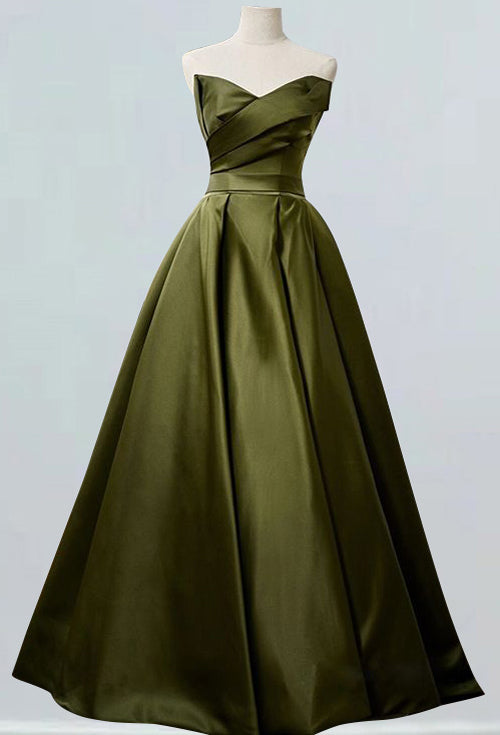The Evolution of Formal Dresses and Evening Gowns in the United States: A News Perspective
The Rise of Formal Dresses: Impact on the Fashion Industry
Historical Significance of Formal Attire
In the U.S., formal dresses have a rich past. These gowns mark key life events. Think proms and weddings. They also show class and status. Social norms once demanded such attire. Think high-society balls. Designers like Dior shaped the industry. They made formal wear a craft. Today, these gowns honor tradition. They blend history with modern style at events. They also impact fashion trends. Formal dresses thus hold a special place. They are both timeless and ever-evolving.

The Influence of Media and Entertainment on Formal Wear Trends
Media and entertainment shape what we wear. Stars on TV and in movies inspire us with their clothes. When celebrities wear formal dresses, people take notice. Fashion blogs and magazines feature these gowns. Big events like the Oscars show off the latest styles. Designers get known from these shows. People want to dress like their favorite stars. This leads to trends in formal wear. Those trends affect the whole fashion industry. Brands and shops then focus on formal dresses and gowns. The media's power in fashion is clear. It's a cycle that keeps evolving.
The Economic Implications of Formal Dresses Popularity
The rise of formal dresses has had a big impact on the economy. More people are buying high-end gowns for events. This trend helps many businesses in the fashion field. Dress makers, fabric stores, and fashion designers all get benefits. Shops that sell formal wear see more sales, especially during prom and wedding seasons. Online stores also see a boost from shoppers looking for deals. On the flip side, the higher demand can raise prices. It also means more work for dress factories, sometimes in tough conditions. Overall, the popularity of formal dresses shapes the fashion market in big ways.
Transformations in Evening Gowns: Style and Substance
Evolution of Evening Gown Styles
Evening gowns have seen big changes over the years. Once heavy and stiff, styles became lighter and more fluid. In the 1920s, flapper dresses with beads were all the rage. By the 1950s, ball gowns with big skirts were in. Today's gowns blend tradition with modern trends. Fabric has shifted too. Silk and satin were classics, but now we see high-tech blends. Colors have gone from classic blacks and whites to daring reds and even prints. Designers now play with lengths, from floor-sweeping to knee-high. Sleeves vary widely too, from strapless to long sleeve options. The goal is to make a statement and feel good. Women want both style and comfort in their evening wear.
Sustainable Practices in Gown Manufacturing
As the world focuses on eco-friendly living, gown making also adapts. More brands are now using sustainable fabrics. These fabrics include organic cotton and recycled polyester. They also use less water and energy in the process. Even the dyes are now eco-safe. This cuts toxins that go into our waters. Labels show if a dress is made with such care. Stars often wear 'green' gowns to big events. This helps the trend grow. People now look for these dresses when shopping. This switch is changing the gown industry for the better.
The Role of Cultural Events in Shaping Gown Designs
Cultural events are often trends' launchpads, especially in evening gown designs. They mirror society. Think Met Gala. Here, themes push couture boundaries yearly. Oscars too have a say. Red carpet looks set global standards. Mimicking celebs becomes common. Not just in the US. It's global. Fashion weeks are key. They show what's hot and what's not. Take New York Fashion Week. It's a trend hotspot for classy gowns. Even local events matter. They highlight traditional styles. This blend shapes the modern gown scene.
The Future of Formal Dresses: Predicting the Next Big Trend
Innovations in Dress Materials and Techniques
The fashion world is always moving forward. Designers are now using new materials to make formal dresses. These materials are not only better looking but also kinder to our planet. They are making dresses with things like bamboo and recycled plastics. Some are even using new ways to cut and make dresses that waste less fabric. This makes formal dresses better for both people and the earth. We may soon see dresses that change color on their own or fix their own tears. This is because of advances in tech. Dressmaking techniques are improving all the time. this makes it an exciting time for fashion lovers everywhere. We can't wait to see what the next big thing in formal dresses will be.
The Rise of Smart Dressing: The Integration of Technology
As we gaze into fashion's crystal ball, one trend shines bright: smart dressing. This is where tech meets texture. Designers are now embedding tech into fabrics. Picture dresses that can change color or pattern with a tap on an app. Or evening gowns that track your body's vitals. This isn't sci-fi; it's the future of formal wear. Innovative materials may also react to light or temperature, shifting in hue or texture. It's exciting and it's coming soon. This marriage of tech and textiles will redefine elegance. What once was static will dance to a rhythm of data and connectivity. The possibilities are boundless.
Adapting to Changing Societal Norms and Expectations
As society evolves, so do our fashion norms. Future formal dresses will mirror shifts in our values. Inclusion will steer design, allowing for diverse body types. Expect a blend of tradition and innovation. New norms may relax dress codes at events. Adaptation in formal wear will reflect our changing world.








